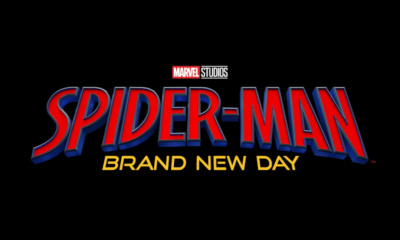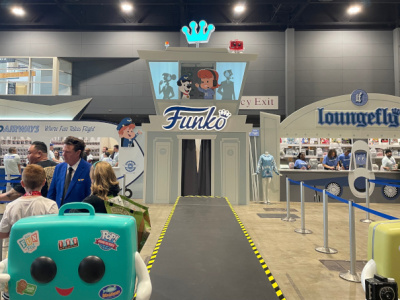
ICv2 sat down with Viz Vice President Publishing Leyla Aker; Director, Publishing Sales and Marketing Kevin Hamric; and Executive Vice President Publishing Alvin Lu at San Diego Comic-Con for an in-depth interview. In Part 1, we talk about changes in the manga market, Viz’s original kids graphic novel program, and replacing Shonen Jump. In Part 2, we talked about digital strategy, the impact of digital on print and piracy, Viz’s top launches in the rest of 2012, things to watch in its ongoing series, and the broadening range of Japanese material Viz is publishing.
What are you seeing in terms of the overall market for manga in 2012 vs. 2011 (obviously 2011 was rough with the loss of Borders)?
Leyla Aker: What we’re seeing so far this year is what we were hoping to see this time last year; that the market is definitely stabilized and we’re starting to make up some of the ground that we lost before. As you noted, there were a lot of challenges last year. I think that some people were unsure about what direction things were going to go. We felt fairly confident that things would end up balancing out this year, and that’s what we’re seeing. So that’s pretty gratifying.
In terms of sales from Borders, are you seeing those go to online retail, to Barnes and Noble, to independent retailers? Are those sales migrating? Do you feel you’re recovering the ones that were lost by those doors?
Aker: Not just us but the industry as a whole--we’re seeing some of those sales migrate to the channels you just mentioned--B&N, Amazon, independent stores. There are no hard figures out there in anybody’s hands, but anecdotally it seems like a portion of those sales have gone to other channels, and a portion of those sales have not transferred. But in terms of absolute numbers, nobody really knows.
Have there been any efforts to find new channels to place physical product?
Aker: We’re always looking for new places to put stuff, definitely, in the physical format. But it’s probably not a surprise to hear me say that the main area where we’re looking for more channels is on the digital side because that’s where everything is transitioning. And yes we are very aggressively looking at new channels for the digital product.
How many volumes did you put out in 2011 and how many do you expect to put out in 2012?
I think we’re hovering around 300 or so. That’s what we put out in 2011, and that’s what we’re anticipating to put out in 2012 as well. It’s stabilizing. At the high point in 2008 and 2009 I think we had around 450 so we find this is a good homeostasis--a good level for us to be at.
In our interviews with comics stores, some retailers say they’ve been seeing manga sales recovering a bit from where they were before Borders shut down. What are you seeing from that channel? Is there anything you want to communicate to those retailers in terms of opportunities?
Kevin Hamric: We’re working more closely with our main distributor, Diamond, for that channel, but we’re also talking directly with a great number of those stores who contact us or when we go to the Diamond Retailer Summits. There is interest in it. They’ve been reaching out to us for more help to select titles and series to bring in and how to bring them in. The biggest area with that channel is the kid’s area where they’re seeing tremendous growth and we are, too. We’re working more closely with Diamond and the retailers directly for those. They just want some more information and some more help from the publisher on what to bring in and how to carry it.
The expansion of kids material is happening across channels, right?
Hamric: That’s true. A lot of people say kids is recession proof, but we’re also seeing the crossover to kids properties in all formats and sales channels and in all countries that we distribute to. We’re actively and aggressively securing new IPs and new brands to publish for VizKids.
One of the things we’ve noticed in the kids area is that you’re starting to create original material here in the States. Can you tell us when that program started, where it is now and where you see it going? It’s something that was talked about for years at Viz and now it seems to be happening.
Aker: We started looking at it a couple of years ago. It’s something we always talked about. Obviously our core business, and to use the jargon, our core competency, is adapting licensed material, but we felt that as a company we definitely had a lot to offer in terms of being able to generate our own material as well. So we looked for different ways to approach it and a couple of years ago we had to decide which direction we wanted to go in. Children’s publishing at that point seemed like a natural progression for us because we already had a strong children’s catalog with the licensed stuff like Pokeman and that whole publishing history.
We decided to concentrate on that instead of the adult market. Obviously the adult original market is really well served by a number of really wonderful publishers, but we felt at the time that children’s graphic novels weren’t really being done in any significant fashion. We thought there was a need there and we stepped into it.
Looks like your target demo there is pretty young. Are you targeting 10 and under, and are you looking at the tween market at all?
Aker: The tweens are reading our regular manga, so with the VizKids line we are targeting the below 12 crowd. Our target age is probably about 7-10.
Is one of the reasons you’re doing more production of material here in the States for that demo that the material from Japan for that demo tends to have a wider range of appropriateness, if that’s a good way to put it?
All: Yes (laughter).
Hamric: That’s a very good way to put it.
Aker: There’s a lot of really fantastic kids properties that are being run in Japan, but the issue that you raised is exactly that: what is considered age appropriate over there is not necessarily age appropriate over here.
Alvin Lu: I should also add that kids comics in Japan are heavily humor oriented and our history as manga publishers is that we’ve always found the humor more challenging from both a translation standpoint and as well as getting the joke--what’s funny and what’s not funny. It’s always been safer to go with straight ahead action, and with kid properties in Japan, it’s very humor oriented.
How many original volumes did you do in 2011 and 2012 and how many to project doing going forward?
Lu: The program’s really just getting off the ground. We had one significant original title, which was Mameshiba; Voltron and Winx Club just came out. We’re kind of taking a very deliberate approach with this, but everyone will be seeing a noticeable ramp-up in the coming year. Probably right now we’ve got four and we’ll be looking at a handful of new properties that will be ready to announce by the end of year.
Turning to the digital side, the last time we spoke you talked about the transition from Shonen Jump to Shonen Jump Alpha (see "Why Cancel One of the Bestselling Comics in the U.S.?"). How is that transition going and are you reaching the same number of people with digital that you were with the print?
Alvin Lu: It’s been an exciting transition. It’s a very different product than the print product. We’re basically on track for what our expectations were. In terms of the scope of the print circulation, I would say it’s not matching that in terms of the newsstand distribution that we had.
We are picking up, from early signs, a different kind of consumer who’s more comfortable reading digitally than the ones that were picking it up in print. So it’s not a direct crossover. That said, we’ve only just begun to expand the device penetration for Alpha. In fact yesterday we just announced the deployment to Android phones which will be the first time you can buy a subscription or buy a single issue of Shonen Jump Alpha on an Android phone. It looks really nice, and it’s a really exciting development for us.
From our experience with the manga graphic novels, intuitively you would guess that for the phone market in particular it skews a little younger, and that’s true in more significant amounts than we had anticipated. That was why we decided to deploy to the phones first before the tablets on the Android platform.
You mentioned that the consumer is different and more digital friendly. What other differences are there--older, younger, gender? Any other observations about the differences between the Shonen Jump consumer and the Shonen Jump Alpha consumer?
Lu: I don’t want to make too many generalities right now but it looks like it’s a somewhat older audience, especially in the immediate new customers we picked up in the initial few months and that seems to make sense.
How many digital volumes and collections do you have available on Viz apps now?
Aker: I think we’re at around 600 volumes right now. We’ve been adding new series and new volumes at a really steady rate. We’re going to continue to do that as long as we can, as long as we have inventory.
Where do you think you’ll be by the end of the year?







